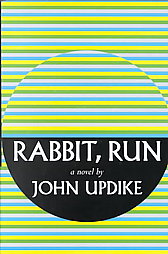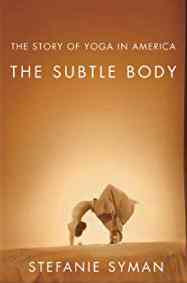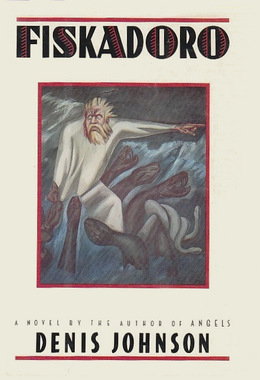
John Hoyer Updike was an American novelist, poet, short-story writer, art critic, and literary critic. One of only four writers to win the Pulitzer Prize for Fiction more than once, Updike published more than twenty novels, more than a dozen short-story collections, as well as poetry, art and literary criticism and children's books during his career.

The Accidental Tourist is a 1985 novel by Anne Tyler that was a finalist for the Pulitzer Prize and won the National Book Critics Circle Award for Fiction in 1985 and the Ambassador Book Award for Fiction in 1986. The novel was adapted into a 1988 award-winning film starring William Hurt, Kathleen Turner, and Geena Davis, for which Davis won an Academy Award.

The Bell Jar is the only novel written by the American writer and poet Sylvia Plath. Originally published under the pseudonym "Victoria Lucas" in 1963, the novel is supposedly semi-autobiographical with the names of places and people changed. The book is often regarded as a roman à clef because the protagonist's descent into mental illness parallels Plath's experiences with what may have been clinical depression or bipolar II disorder. Plath died by suicide a month after its first United Kingdom publication. The novel was published under Plath's name for the first time in 1967 and was not published in the United States until 1971, in accordance with the wishes of both Plath's husband Ted Hughes and her mother. The novel has been translated into nearly a dozen languages.
Anne Tyler is an American novelist, short story writer, and literary critic. She has published twenty-four novels, including Dinner at the Homesick Restaurant (1982), The Accidental Tourist (1985), and Breathing Lessons (1988). All three were finalists for the Pulitzer Prize for Fiction, and Breathing Lessons won the prize in 1989. She has also won the Janet Heidinger Kafka Prize, the Ambassador Book Award, and the National Book Critics Circle Award. In 2012 she was awarded The Sunday Times Award for Literary Excellence. Tyler's twentieth novel, A Spool of Blue Thread, was shortlisted for the Man Booker Prize in 2015, and Redhead By the Side of the Road was longlisted for the same award in 2020.

Arthur Phillips is an American novelist. His books include Prague (2002), The Egyptologist (2004), Angelica (2007), The Song Is You (2009), The Tragedy of Arthur (2011), and The King at the Edge of the World (2020).

Independence Day is a 1995 novel by Richard Ford and the sequel to Ford's 1986 novel The Sportswriter. This novel is the second in what is now a five-part series, the first being The Sportswriter. It was followed by The Lay of the Land (2006), Let Me Be Frank With You (2014) and Be Mine (2023). Independence Day won the Pulitzer Prize and PEN/Faulkner Award for Fiction in 1996, becoming the first novel ever to win both awards in a single year.

The Secret History is the first novel by the American author Donna Tartt, published by Alfred A. Knopf in September 1992. Set in New England, the campus novel tells the story of a closely knit group of six classics students at Hampden College, a small, elite liberal arts college located in Vermont based upon Bennington College, where Tartt was a student between 1982 and 1986.

Michiko Kakutani is an American writer and retired literary critic, best known for reviewing books for The New York Times from 1983 to 2017. In that role, she won the Pulitzer Prize for Criticism in 1998.

Rabbit, Run is a 1960 novel by John Updike. The novel depicts three months in the life of a 26-year-old former high school basketball player named Harry "Rabbit" Angstrom, who is trapped in a loveless marriage and a boring sales job, and attempts to escape the constraints of his life. It spawned several sequels, including Rabbit Redux, Rabbit is Rich and Rabbit at Rest, as well as a related 2001 novella, Rabbit Remembered. In these novels, Updike takes a comical and retrospective look at the relentless questing life of Rabbit against the background of the major events of the latter half of the 20th century.
Yoshiko Uchida was a Japanese American writer of children's books intended to share Japanese and Japanese-American history and culture with Japanese American children. She is most known for her series of books, starting with Journey to Topaz (1971) that took place during the era of the mass removal and incarceration of Japanese Americans during WWII. She also authored an adult memoir centering on her and her family's wartime internment, a young adult version her life story, and a novel centering on a Japanese American family.

Exit Ghost is a 2007 novel by Philip Roth. It is the ninth, and last, novel featuring Nathan Zuckerman.
Jane Simone Mendelsohn is an American writer. Her novels are known for their mythic themes, poetic imagery, and allegorical content, as well as themes of female and personal empowerment. Mendelsohn's novel I Was Amelia Earhart was an international bestseller in 1996 and was shortlisted for the Orange Prize for Fiction.

Roger's Version is a 1986 novel by American writer John Updike.
Nora Okja Keller is a Korean American author. Her 1997 breakthrough work of fiction, Comfort Woman, and her second book (2002), Fox Girl, focus on multigenerational trauma resulting from Korean women's experiences as sex slaves, euphemistically called comfort women, for Japanese and American troops during World War II and the ongoing Korean War.

The Age of Miracles is the debut novel by the American writer Karen Thompson Walker. It was published in June 2012 by Random House in the United States and Simon & Schuster in the United Kingdom. The book chronicles the fictional phenomenon of "slowing", in which one Earth day begins to stretch out and take longer and longer to complete. The novel received positive reviews and publishing deals totaling £1.12 million, and has been translated into a number of languages. The book was nominated as part of the Waterstones 11 literary award in 2012.

Homegoing is the debut historical fiction novel by Ghanaian-American author Yaa Gyasi, published in 2016. Each chapter in the novel follows a different descendant of an Asante woman named Maame, starting with her two daughters, who are half-sisters, separated by circumstance: Effia marries James Collins, the British governor in charge of Cape Coast Castle, while her half-sister Esi is held captive in the dungeons below. Subsequent chapters follow their children and following generations.

Seek My Face is a 2002 book by John Updike.

The Subtle Body: The Story of Yoga in America is a 2010 book on the history of yoga as exercise by the American journalist Stefanie Syman. It spans the period from the first precursors of American yoga, Ralph Waldo Emerson and Thoreau, the arrival of Vivekananda, the role of Hollywood with Indra Devi, the hippie generation, and the leaders of a revived but now postural yoga such as Bikram Choudhury and Pattabhi Jois.

Fiskadoro is post-apocalyptic novel by Denis Johnson published in 1985 by Alfred A. Knopf.

Eat the Document is a 2006 novel by American writer Dana Spiotta about New Left activists in the 1970s and their successors a generation later in the 1990s. Its title refers to a 1972 documentary about Bob Dylan. It was a National Book Award finalist and won the Rosenthal Foundation Award from the American Academy of Arts and Letters.















